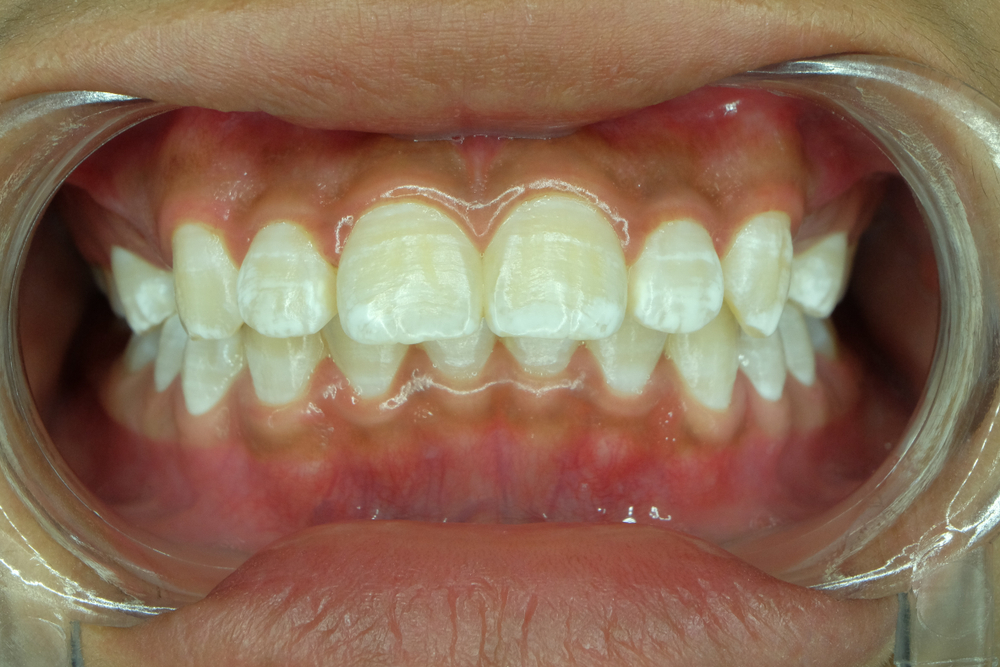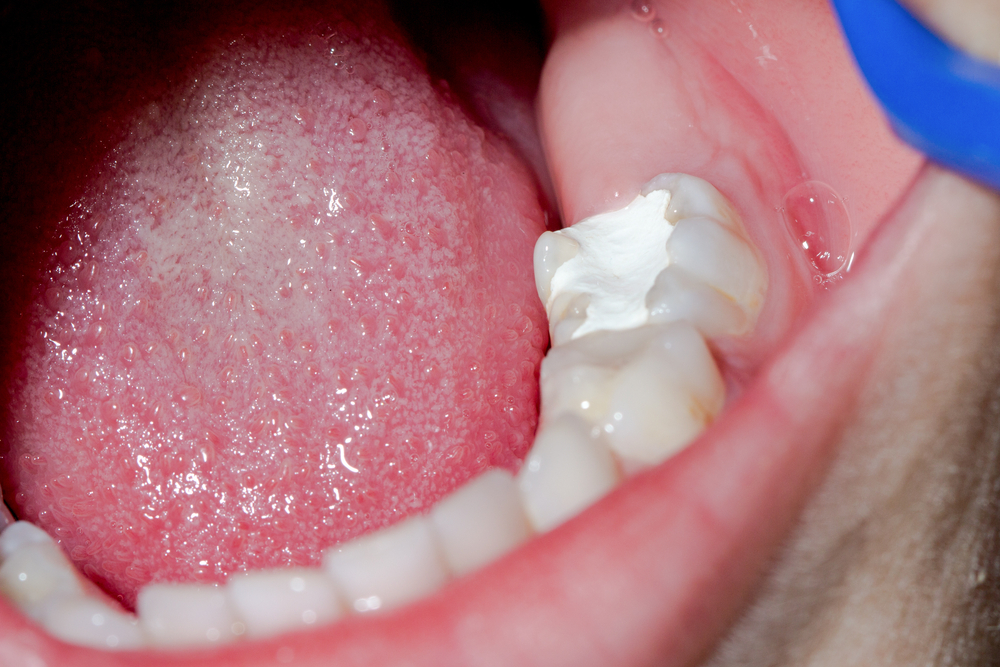- White spots on teeth can occur in people of all ages.
- They can be caused by a number of medical and oral health issues.
- Happily, there are many treatment options available for white spots.
Most people prefer the appearance of bright, white teeth. However, pale patches that are brighter than the color of surrounding tooth enamel can mean you are suffering from a dental condition.
These patches, or “white spots,” can occur on the surface of the tooth in both children and adults. There are a few different reasons these chalky-looking blemishes occur.
Common causes of white spots
White spots on your teeth are indicative of a weak spot in the tooth enamel. This fragile area results from a process called hypocalcification, which means there are insufficient natural minerals in the enamel of the tooth.
Reasons for mineral loss include tooth trauma, an inherited condition called amelogenesis imperfecta, and poor oral hygiene. Children can also suffer from mineral loss as a result of a high fever or virus before the tooth erupted from the gums.
Other causes of hypocalcification and white spots include:
- A diet of acidic foods
- Acid reflux disease
- Using too much fluoride or too many teeth-whitening strips
- Braces
- Certain medications
White spots can also be caused by complications in the womb, says Dr. Tim Stirneman of Compassionate Dental Care in Lake of the Hills, IL. “It is entirely possible to get white spots if your mother smoked while she was pregnant,” he explains.
When to see a dentist
White spots on teeth are not an emergency, but you should not ignore them. Because hypocalcification and mineral loss can lead to decalcification and tooth decay, it is important to see the dentist at your earliest convenience.
Some patients choose to wait until their next routine exam and teeth cleaning, whereas others make an extra appointment to determine how to strengthen their enamel before further demineralization occurs.
If you recently had your biannual checkup, it is helpful to schedule an additional visit to handle the condition sooner rather than later.
What dentists can do about white spots
There are a few ways your dentist can treat white spots. The spots themselves are a cosmetic or surface issue and can be treated with various cosmetic treatments.
One of the most conservative methods is to polish and whiten the tooth around the spot to better hide it. This process can be completed by either the dentist or the dental hygienist.
Other possibilities include dental bonding, dental veneers, and a process called remineralization. Your dental professional can provide you with more information on each treatment, but our brief primer explains the benefits of each process and what to expect.
Dental bonding
This common oral health treatment, also known as composite restoration, is used as both an alternative to amalgam (metal) fillings and to fix white spots. It involves the application of a tooth-colored composite resin to the enamel.
Adults or children with a few small blemishes might prefer this treatment because it is one of the most affordable and convenient dental procedures. Bonding is completed in one visit to the dentist’s office. Patients can return to work or school the same day and will not experience discomfort.
Dental veneers
If patients have large spots and a significant amount of tooth decay, they can choose to get dental veneers. These cosmetic restorations are made up of thin pieces of porcelain matched to the color of your enamel and cemented to the front of your teeth. In addition to eliminating the appearance of white spots, they will immediately whiten and improve the look of your smile.
There are many benefits to porcelain veneers, but they do cost more than treatments like dental bonding. And repeat visits to the dentist might be needed to complete the treatment process. Veneers are irreversible, so patients should be sure they want them before agreeing to the procedure.
Remineralization
Remineralization is a procedure that adds minerals to the tooth enamel to make the tooth more resistant to cavities.
A calcium and phosphate mixture provided by your dentist is used to strengthen the tooth from the inside out, while simultaneously eliminating the white spot. After treatment, your dentist might recommend that you use a special fluoride toothpaste.
Risks and considerations of white spot treatment
The risks of the cosmetic procedures outlined are relatively low. However, dentists caution that dental veneers can increase sensitivity to hot and cold foods, and both dental bonding and veneers can leave teeth susceptible to cavities. Patients who have these treatments should maintain a strict brushing and flossing routine and see a dentist regularly.
Remineralization, in contrast, can help reduce or prevent cavities. Still, patients who opt for this procedure should continue to maintain proper oral hygiene to avoid tooth decay and gum disease.
Deciding which treatment is right for you
The treatment that is right for you depends on the severity and cause of your white spots. Because white spots are caused by a weakness in the tooth, it is important to consult with a dental professional.
An examination of your tooth enamel and a review of your medical history will help your dentist determine why hypocalcification has occurred and figure out what will prevent further problems and improve the look of your teeth.
Dr. Amanda Sheehan of Oakland Family Dental in Waterford, MN, often recommends remineralization treatments to her patients. “Since calcium and phosphate occur naturally in our saliva, the remineralization process is safe for virtually all patients. A well-executed procedure is very effective in eliminating white spots,” she says.
Caring for white spots on the teeth
Because white spots can be caused by events that occur in childhood or even before birth, it might not always be possible to prevent them. However, you can reduce the chances of further problems by caring for your teeth on a daily basis and keeping regular appointments with your dentist.
Talk to your dentist about the best ways to treat your teeth and what you can do at home to help remineralize your enamel naturally. A combination of non-invasive dental procedures and better oral hygiene can help you reduce or eliminate unsightly blotches and feel more confident about your teeth.









